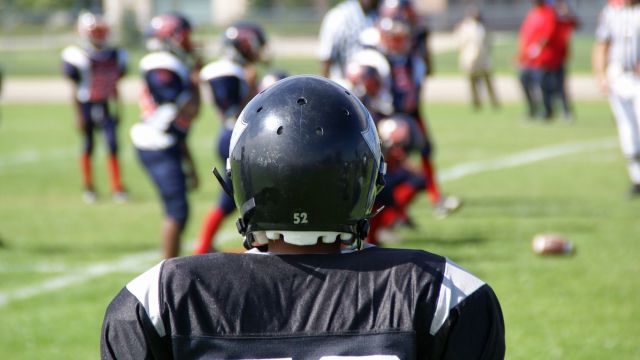When talking about concussions, it doesn’t take long for someone to bring up football. Over the past decade, there’s been a lot of discussion—and controversy—about the dangers of concussions in football players. The National Football League (NFL) has taken a not-overly-concerned stance—usually denying evidence that connects football to repetitive brain trauma—until recently.
In 2016, Jeff Miller, the NFL’s Senior Vice President for Health and Safety Policy, admitted there’s a link between football and a degenerative brain disease called chronic traumatic encephalopathy (CTE). CTE can cause difficulty thinking, changes in mood and memory problems, among other things. And long term, can lead to dementia, parkinsonism, or sometimes other neurodegenerative diseases.
But concussions don’t just happen in football—they can come about in almost any sport, and that’s a scary fact for parents. We caught up with Jennifer Hopp, MD, and Douglas Cutter, MD, of Chippenham Hospital in Richmond, Virginia, to learn more about concussions in young athletes and what parents can do to help lower their child’s risk.
Risk factors for a sports concussion
According to Dr. Cutter, concussions tend to be more common among high school kids because teens have bigger, stronger bodies—though they can happen to kids of all ages, even as young as 5 years old.
Unsurprisingly, concussions occur most frequently in sports where there's increased opportunity for head contact. But kids who play non-contact sports aren't off the hook. For kids and teens between ages 10 and 19, boys suffered traumatic brain injuries most often while playing football or bicycling, while girls had them most frequently in soccer or basketball games, or while bicycling.
Essentially, though, concussions can happen in any sport. "I've seen it happen where a kid in track and field fell over a hurdle and hit their head," says Cutter. "Or they did a high jump and missed a pit and landed on their head. There’s all sorts of possibilities."
How to reduce the risk of concussion
While it's impossible to predict when a concussion will happen, there are ways to lower the risk of serious brain injury. Try these three tips:
1. Practice awareness. It’s important to know what concussion symptoms look like and that if your child feels funny after a hit to the head, they should speak up. "Awareness is honestly the biggest prevention tip," says Dr. Hopp. "Create awareness from coaches, parents and within the athlete as well. So, don't worry about the sport, worry about the player." Here are the most common concussion symptoms:
- Difficulty concentrating, thinking clearly or remembering
- Headache
- Blurry vision
- Dizziness
- Nausea or vomiting
- Sensitivity to noise or light
- Exhaustion
- Balance problems
- Sadness, irritability
- Nervousness, anxiety
- Sleep problems
2. Use the right protective equipment. Though no piece of equipment can prevent concussions completely, it does help to have the proper safety gear. A sturdy, well-fitting football helmet is better than a loose one that could come off, raising the risk for an even more traumatic brain injury.
3. Stress following safety rules for the sport. The Centers for Disease Control and Prevention encourages a "culture of safety" for children and their sports team. This means ensuring your child plays with good sportsmanship and follows the coach's directions for safety. For example, kids should learn safe tackling technique at the very beginning of youth football, and be taught to avoid dangerous practices like “spearing,” or head-first tackling.
What to do if you think your child has a concussion
Even if your child follows all of the precautionary guidelines, they can still get a concussion. Here's what to do:
- Seek medical attention immediately. If there’s any reason to suspect a concussion, your child should be assessed by a qualified professional, an athletic trainer or a physician as soon as possible. If symptoms are severe, the ER may be your best bet.
- Do not allow your child to return to play. If your athlete has a known or suspected concussion, wait until they've been cleared by a healthcare professional. Returning too soon can lead to more severe and long-term brain damage, a longer recovery time and even second impact syndrome. "Kids have to be able to go back into school without symptoms before they're allowed into a supervised 'return to play protocol,’” says Hopp.
- Notify coaches, teachers and doctors about your child's concussion history. Tell adults who interact with your child on a daily basis, so they can help with recovery and take extra precautions.
- Ease back into activity. Expert guidelines now say children can return to school after one or two days, even before symptoms fully resolve. Light activity—such as walking or riding an exercise bike for 20-30 minutes per day—can help speed recovery. And electronic use is ok as long as it doesn’t trigger symptoms.

